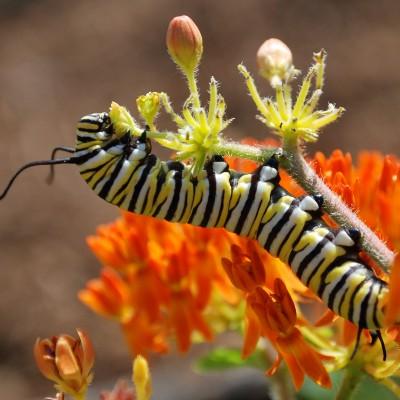More and more people are including native plants in their gardens. Here are the top 5 reasons why they are a good choice.
1. Enjoy a beautiful landscape
You can have a beautiful landscape by usig native plants. What your landscape looks like is influenced more by design and maintenance style than by the plants you use. Many people who garden with native plants do choose a naturalistic style, but native plants are being used in formal-style gardens as well. Visit a native plant demonstration garden near you to observe how others are using native plants as well as their approaches to design and maintenance.

Native demonstration landscape at Adkins Arboretum
2. Preserve Maryland’s biodiversity
When you include a plant in your garden, you impact the natural areas near your home. Your garden plant cross-pollinates with wild plants, and may even disperse seeds or berries into natural areas. When the plant you have included is locally native, your garden actually benefits wild plant populations, and as we shall see in a moment, that benefits pollinators and songbirds, too.

This monarch caterpillar can only eat milkweed. No milkweeds, no monarch butterflies.
3. Support pollinators
Research shows that using native plants is the best way to create a haven for pollinators like native bees and butterflies and even to attract beneficial insects that will help the rest of your garden. Why? Over millennia, native insects and native plants have co-evolved and reached an intricate balance. Many insects can only eat the plants they co-evolved with.
4. Support song birds
Native plants provide the abundance of seed, berries, and habitat required by our native bird species. Not only that, but by supporting robust native insect populations, native plants are indirectly responsible for providing the insect food that most baby song birds require.
5. Low-input landscapes
Conventional landscapes featuring large lawns and showy alien flowers are often sustained with high levels of fossil fuel use, fertilizers, pesticides, and supplemental water. By siting native plants in conditions where they naturally compete well, you can create low-input landscapes.
